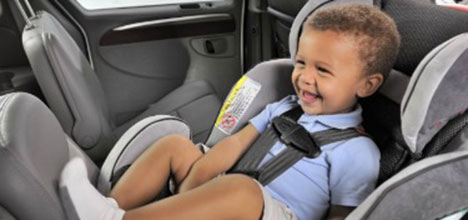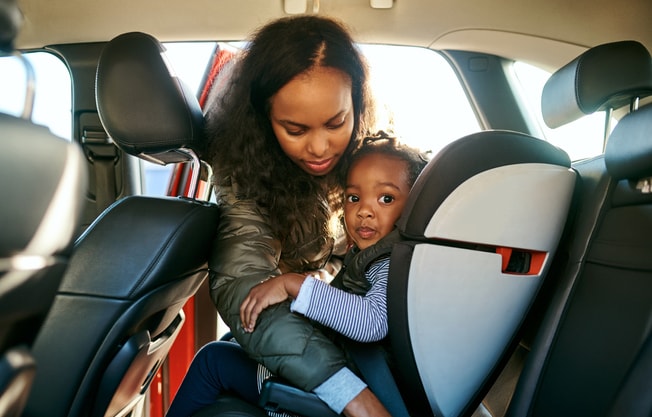

Observed booster seat use among children age 4–7 years increased by 19 percentage points after booster seat laws were implemented in Milwaukee County, Wisconsin.A study among children involved in crashes found that restrained children were 66% more likely to be buckled in appropriate restraints if their state law followed best practice recommendations.Children age 4–8 years in states with booster seat laws were over four times as likely to be using age-appropriate restraints and were 20% less likely to die than children in states without booster seat laws.Strengthening current laws with booster seat provisions that require children who have outgrown car seats to use booster seats until at least age 9 helps reduce injuries and deaths.Child restraint laws require children riding in vehicles to use approved restraint devices such as car seats, booster seats, or seat belts that are appropriate for their age, height, and weight.The Community Preventive Services Task Force recommends child restraint laws to increase restraint use and decrease injuries and deaths among child passengers, based on strong evidence of effectiveness.An estimated 46% of car seats and booster seats are misused in a way that could reduce their effectiveness.

Child restraint systems are often used incorrectly.
CHILD RESTRAINT SYSTEMS CAR DRIVERS
In 2019, 67% of fatally injured children riding with unbelted drivers were also unrestrained (based on known restraint use). Restraint use among young children often depends on the driver’s seat belt use.Among children who died in alcohol-impaired driving crashes, a higher proportion of those riding with impaired drivers were unrestrained (58%) compared with those riding with sober drivers (37%).
CHILD RESTRAINT SYSTEMS CAR DRIVER
In 2019, 23% of child passenger deaths among children age 14 years and younger in the United States involved alcohol-impaired driving (blood alcohol concentration ≥0.08 g/dL) 64% of the time, it was the child’s own driver who had been drinking.


 0 kommentar(er)
0 kommentar(er)
